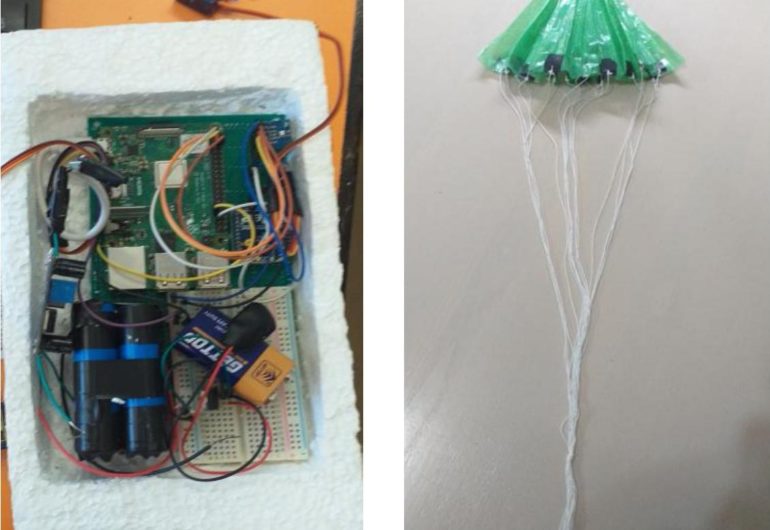
Balloon Satellite for Technology Demonstration
FUNDED BY; NATIONAL ICT INITIATIVES SUPPORT PROGRAM UNDER MAKERERE INNOVATION AND INCUBATION CENTER

INTRODUCTION
Imaging of the moon is expensive and full of engineering challenges. Scientists interested in space are willing to take on the engineering challenges but can do little to overcome high cost of getting to the moon. Balloon imaging is a low-cost method of accessing space while retaining the engineering challenges. Balloon imaging provides an excellent way of exploring space.
PROBLEM STATEMENT
Due to high cost and limited access to space that allow young people to perform research and training in space technology, the Space Technology Agency team proposed a simpler model as a platform for training and advancing in weather Balloon Satellite technology which enables lower atmospheric remote sensing. The Space Technology Agency team designed, assembled and tested a BalloonSat. During the testing phase, the team will provide aerial images along with various other flight trajectory data.
PROJECT OBJECTIVES
General objective
- To design and implement a BalloonSat Imaging model for purposes of capturing and transmitting images to the ground station.
Specific objectives
- To design a schematic diagram for the BalloonSat Imaging model
- To program the payload to transmit the trajectory parameters of the balloon during its ascent to the ground station.
- To acquire and maintain pointed observations of space so as to take aerial photographs.
- To launch the payload into space for testing purposes.
PROJECT METHODOLOGY: SYSTEMS DESIGN
Recent work in the field of High-Altitude Balloon flight development opened the door for many Hobbyists to create interesting Earth observation projects. This project however looked at capturing aerial images. The project was divided into three main sections:
- Payload design and testing.
- Project requirements along with the mission objectives
- Expected BalloonSat imaging flight results.
PAYLOAD REQUIREMENTS
The required segments of the Payload are defined as follows:
- Housing design
- Telemetry module
- Downward facing camera
- Ground segment
- Recovery system
Housing design
The housing design was designed to protect the electronic payload from the environmental conditions that are anticipated for the path of the BalloonSat on its voyage. The housing was intended to ensure that the conditions inside the payload remain at high estimated temperature value for the on-board circuitry to remain operation. It comprises of the following physical systems:
- Transmit Antenna
- Telemetry circuitry
- Power Supply
- Microcontroller
- Arducam TTL Camera
- GPS Module
Correct housing material was selected which would satisfy the payload design needed for this project, and the payload is expected to reach a maximum height of 25 km which is thought o be in near space conditions.
Near space conditions range from a distance of 20 – 100 km above sea level with an air pressure reaching as low as 1% of that at sea level and temperatures as low as −600 C. These conditions are very similar to conditions encountered in space. The figure below demonstrates the temperature profile through the various earth atmospheres. The material selected for the payload has to provide protection and insulation to internal components for temperatures ranging to extremes of −600 C and +600 C, it has to be durable to wind and lightweight so that the weather balloon could take it a distance of 25 km.
|
SUMMARY OF BALLOONSAT SPECIFICATIONS
|
|
| RF Data Rate | 24 kbps |
| Outdoor/RF line of sight range | Up to 1800ft(540m) |
| Transmit power | 1mW(0dBm) to 315mW(+25dBm) |
| Frequency band | 868 MHz ISM |
| Interference immunity | Multiple transmissions, acknowledgements |
| Supply voltage | 3.0 – 3.6V |
| Transmit current | 500mA at 3.3v(800mA max) |
